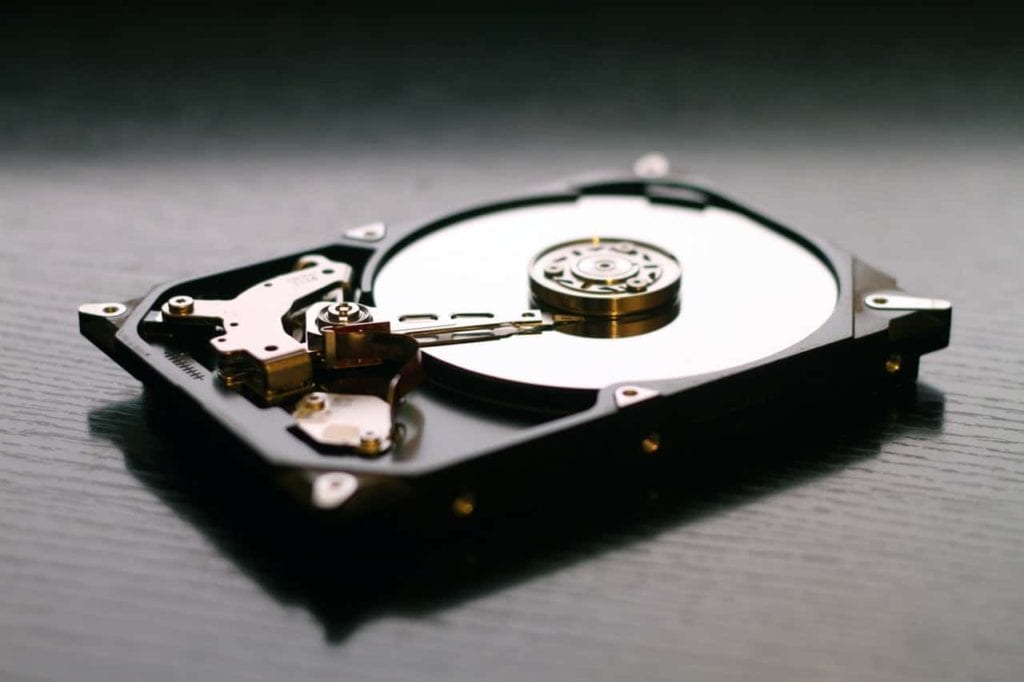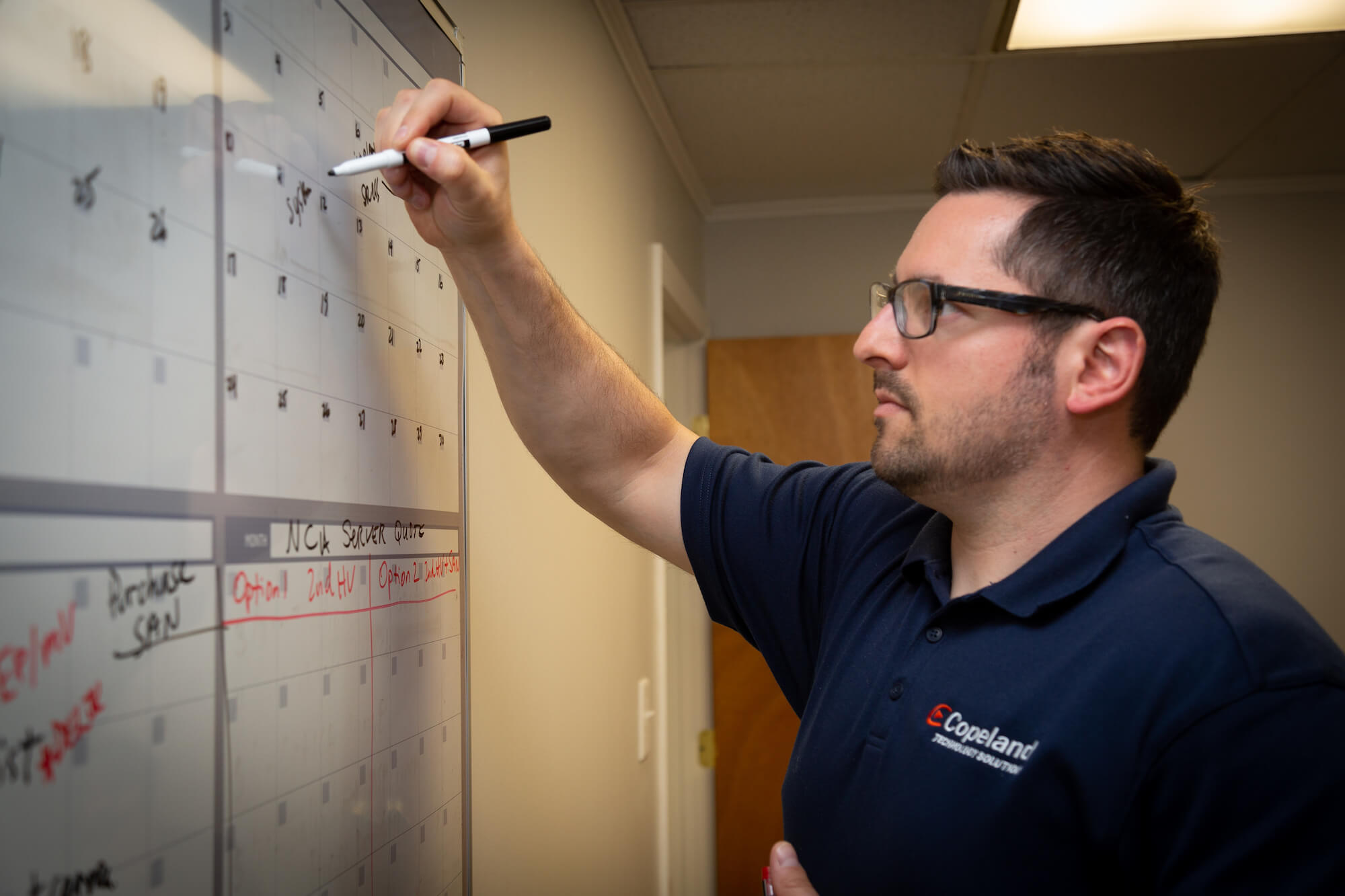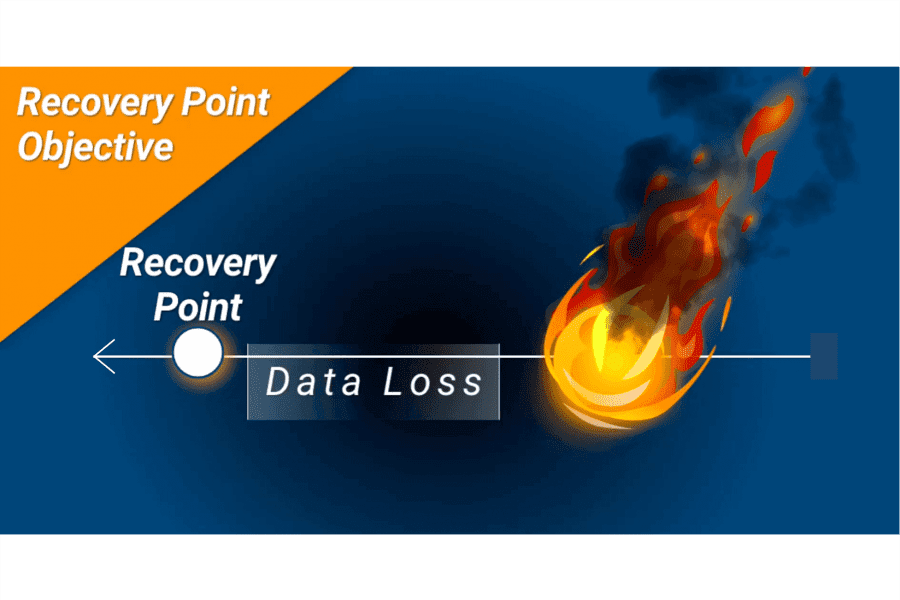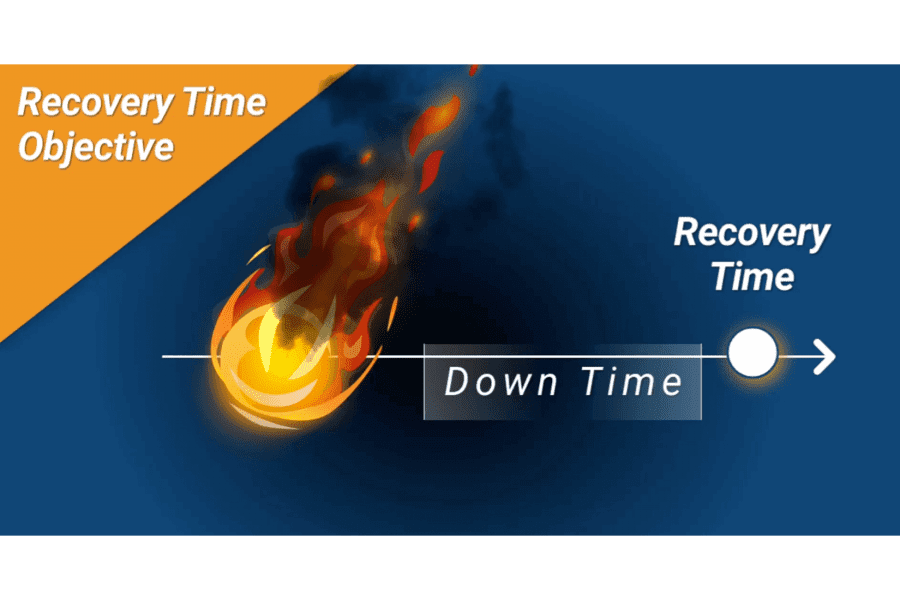Backup and Disaster Recovery Services
Ensure your critical applications and data are always available.
Copeland’s technology experts work with your team to develop your organization’s backup and recovery schedule to ensure your business recovery plan gets you back on your feet in your required timeline.
We take a 3-2-1 approach to solutions to ensure we have (3) copies of your data on (2) different media with at least (1) being off-site. This ensures that no matter how dire the situation, data is not lost and your return to operations schedule is met.
Our end-to-end solution can provide simple backup or high-availability off-site replication for failover in the case of disaster. Full snapshots of servers are utilized to limit the costly time associated with reinstalling software and configuring systems. Simply failover to your backup solution and continue working.
Learn about Backup and Disaster Recovery Solutions
Backup Planning and Disaster Recovery Planning Overview

In this age of virtualization, backup and disaster recovery (DR) plans have never been more critical to the business continuity of small-, medium-, and enterprise-sized businesses.
Backup safely provides a copy of your data in the event of theft, employee accidents such as deleting important files or emails, or technical issues like a crashed hard drive. Your data is safely stored off-site on a tape, disk, secondary computer, and/or cloud storage.
An effective disaster recovery plan is a combination of backup and replication, with the overall goal of ensuring your company maintains RTO (Recovery Time Objective ) schedule. Specific plan options are virtually endless and depend on your specific business requirements. For example, you may decide to purchase a hot spare server for replication, but also backup to the cloud. Another option is to replicate to the cloud and local backups.
A disaster recovery plan puts you back in business after you experience an unforeseen catastrophe. The catastrophe may not be a major incident – it could mean lost data, user errors, system failures, or damaged/misplaced devices. When the catastrophe strikes, time is of the essence to protect company downtime.
How Does the Backup and Disaster Recovery Plan Work?

The backup and disaster recovery system takes image-based mirror snapshots of your disk drives and servers.
For cloud backup, our solution ensures that the images sent to the cloud can be converted over to virtual servers in the event of a disaster.
If disaster strikes, your employees can continue to work using the mirrored system, thereby protecting business continuity.
In the meantime, your IT administrators can work on restoring the system to the original network and get you up and running faster than if they’d have to reinstall an operating system or copy files.
With a backup and recovery plan in place, you can expect:
- 24/7 availability of company data and applications
- Business continuity protection
- Instant file recovery
- Restoration from a catastrophic event
- Reduce requirements on infrastructure by consolidating all data silos, shrinking TCO
Additional Benefits

The 3-2-1 Backup Plan Methodology

In the IT world, a 3-2-1 Data Protection Plan should be implemented to mitigate these risks. Here’s how it works:
- 3: have three copies of your data
- 2: ensure these copies are on two different media types/devices
- 1: make sure at least one of these backup sets is located offsite
Two onsite backups will help get the system up and running quickly – although having two copies in nearby locations can result in both backups being lost in cases of water damage, fire, theft, and other physical interruptions.
So while creating onsite backups is important, having an offsite backup is essential to having a complete backup strategy.
Establishing a 3-2-1 data protection plan should be at the heart of any strategic processes if a business relies on IT systems to operate efficiently.
Developing Your 3-2-1 Backup Plan
The Identify → Discuss → Solve framework is designed to help operations managers effectively address the key components of getting their systems running again.

Recovery Point Objective (RPO) and Recovery Time Objective (RTO)

Recovery Point Objective and Recovery Time Objective are two critical elements to a comprehensive backup and disaster recovery plan. These two pieces are related, though they play distinct roles in your business continuity plan, so be sure to understand the differences and make sure your company is implementing these tactics.
Recovery Point Objective
The Recovery Point Objective (RPO) is an important part of your business continuity and disaster recovery plans.
If you experience a disaster – say, you lose email because of a bad firmware update, or mission-critical software goes down due a hardware failure at your office – the recovery point objective is the amount of time between the disaster and the most recent backup of data.
For instance, if you backup your customer support data each night at midnight, and a disaster occurs at 8:00 am, you will lose the data created between midnight and 8:00 am – the RPO is 8 hours. If the disaster happens at 11:00 pm, you will lose 23 hours worth of data.
Essentially, the RPO answers the questions, “When a disruption occurs, how far back in time will we have to go to retrieve the most recent instance of our data? And how much data are we going to lose?”
In your disaster recovery plan, different RPOs should be set for different business units and data sets.
As an example, mission critical data processes, like financial transactions at a bank, need a very limited RPO because the volume of data (transactions processing every minute) and the importance of the data (real money) is too important to lose, even for an hour.
Less critical data processes, say, your print server, may tolerate a longer RPO, because having to recover 24-hour old data from the print server wouldn’t (in most cases) paralyze the business.
Carefully planned backup and disaster recovery strategies are critical for every business, because the more time you spend on thorough planning, the less data, time, and money your company will lose in case of disaster.


Recovery Time Objective
“After a disruption, how long can we afford to have our systems down before it starts to critically affect our business?” The answer to this is defined by your RTO – your Recovery Time Objective.
Your RTO determines how long data and certain applications (email, phones, inventory system, CRM, POS, etc.) will be offline during a disruption, and what is an acceptable duration of time they can remain offline before it starts to critically impact your business.
You will need to identify the RTO for each application, and for each disaster situation. For example, if you use Quickbooks or another accounting program, how do you define your RTO for this app if only your server goes down, compared to your entire network going down – or what about if the entire building has a disaster?
It will be best to determine these RTOs before planning a solution and purchasing solution components. We work with our partners to identify all of the available applications, how they affect the business in each scenario, and then go on to build a solution based on these requirements. It’s not putting the cart before the horse, but taking measured steps to think through possible situations and engineer solutions.
When you set your RTO it will typically be in units of time, like 4 hours after the event, 8 hours after the event, 12 hours after the event, and so on. When a business determines the RTO for a particular application or set of processes, it’s important to consider the amount of impact this application has on the business, and what it would mean if it became inaccessible for a period of time.
Mission critical processes, like file servers or financial applications, can’t afford to be down for more than a few hours without the business experiencing severe consequences. For less time-sensitive processes, the RTO could be days or even weeks after the event.
RTOs will typically be defined on a per-application basis, or groups of similar applications, in order to prioritize the recovery of certain applications in advance of others depending on their level of criticality.
Overall, RTOs are an important starting place for your business when it drafts its disaster recovery plan. RTOs are a goal, and a disaster recovery plan has to identify the steps required in order to meet the goals. So trying to develop a recovery plan without a clear picture of your RTOs is like planning a road trip without knowing the destination.
Backup and Disaster Recovery with Copeland
Managed IT Services

We work on backup plans and disaster recovery planning all day, every day. If you have any questions about your plans or the health of your technology systems, get in touch with us and let’s talk technology.

